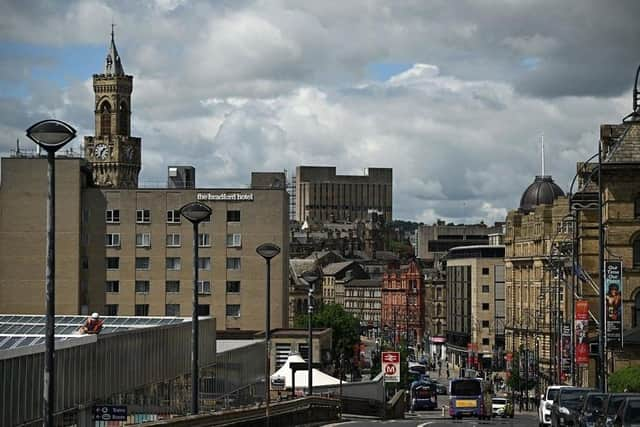Bradford’s Clean Air Zone ‘could be lifted by the end of 2026’
The Government order placed on the District to improve air quality can be lifted two years after Bradford has proved it has reached legal levels, and the Authority’s Director of Air Quality Programmes Andrew Whittles believe the District will reach that level next year.
He was speaking to members of Bradford Council’s Regeneration and Environment Scrutiny Committee this week.
Advertisement
Hide AdAdvertisement
Hide AdMembers were told that the CAZ has generated £10,376,234 of revenue so far, with Bradford Council keeping the majority and Government taking £785,634.


At the meeting Mr Whittles told Councillors of all parties that the majority of vehicles that have to pay the CAZ, commercial vehicles such as taxis, HGVs and vans, now had compliant engines – meaning they did not have to pay.
He said recent air quality readings showed that in recent months areas of Bradford within the CAZ have seen some of the lowest NO2 levels in years – despite vehicle traffic increasing to pre-Covid levels.
At the meeting Councillor Chris Steele (Lab, Wharfedale) asked: “How long will the CAZ last?”
Advertisement
Hide AdAdvertisement
Hide AdMr Whittles said: “I think it will be the end of 2026. We’re hoping we will be compliant next year, and the Government requires us to keep the zone for at least another two years after an area is compliant.”
Cllr Steele added: “Bradford is growing and there is an increasing number of vehicles on the road. Will that delay the CAZ being lifted?”
Mr Whittles replied: “Potentially it could.
“There are other ways we’re making improvements to air quality. The District Heat Network will lead to air quality improvements. There will also be a growth in cleaner traffic. One in five cars bought today are electric cars.”
When the CAZ was introduced one of the big debates in Bradford Council chambers was why the Council opted to introduce a charging CAZ, rather than one that used grants and persuasion to encourage drivers to switch to cleaner vehicles.
Advertisement
Hide AdAdvertisement
Hide AdBradford Council had argued that the non-charging CAZ initially proposed had been rejected by Government, but opponents questioned these claims.
Mr Whittles told members that recent changes to Government legislation meant that all CAZs now needed to be charging zones.
Councillor Alex Mitchell (Lab, Queensbury) said: “It is nice of the Government to fess up.
“There is still a lot of misinformation out there – there is an anti CAZ campaign you’re going to have to tackle.”
Advertisement
Hide AdAdvertisement
Hide AdMr Whittles said: “There is a minority. A lot of the same people didn’t believe in the Covid virus, are very anti-electric car and believe Councils will lock them up in 15-minute neighbourhoods.
“The Born In Bradford study has 18,000 kids in it and of the families asked 71 per cent support the CAZ.
“Unfortunately it has become political at a national level, but for the vast majority of people in the District it has had a minimum disruption.”
Comment Guidelines
National World encourages reader discussion on our stories. User feedback, insights and back-and-forth exchanges add a rich layer of context to reporting. Please review our Community Guidelines before commenting.